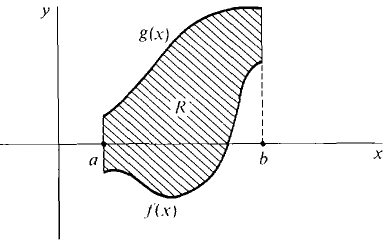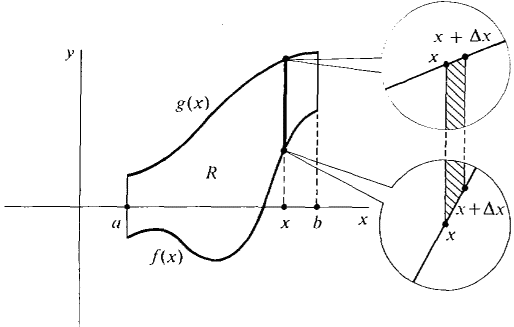| The ebook Elementary Calculus is based on material originally written by H.J. Keisler. For more information please read the copyright pages. |

|

Home  Applications of the Integral Applications of the Integral  Infinite Sum Theorem Infinite Sum Theorem  Area Between Two Curves Area Between Two Curves |
|






|
|
Area Between Two Curves
We shall use the Infinite Sum Theorem several times in this chapter. As a first illustration of the method, we derive again the formula from Chapter 4 for the area of the region between two curves, shown in Figure 6.1.3.
Figure 6.1.3 AREA BETWEEN TWO CURVES where f and g are continuous and f(x) ≤ g(x) for a ≤ x ≤ b. The justification of a definition resembles the proof of a theorem, but it shows that an intuitive concept is equivalent to a mathematical one. We shall now use the Infinitive Sum Theorem to give a justification of the formula for the area between two curves. JUSTIFICATION ΔA x [g(x) - f(x)] Δx (compared to Δx). The infinite sum theorem now shows that A(a, b) is the integral of g(x) - f(x) from a to b.
Figure 6.1.4
|
|
Home  Applications of the Integral Applications of the Integral  Infinite Sum Theorem Infinite Sum Theorem  Area Between Two Curves Area Between Two Curves |
|
Last Update: 2010-11-25




